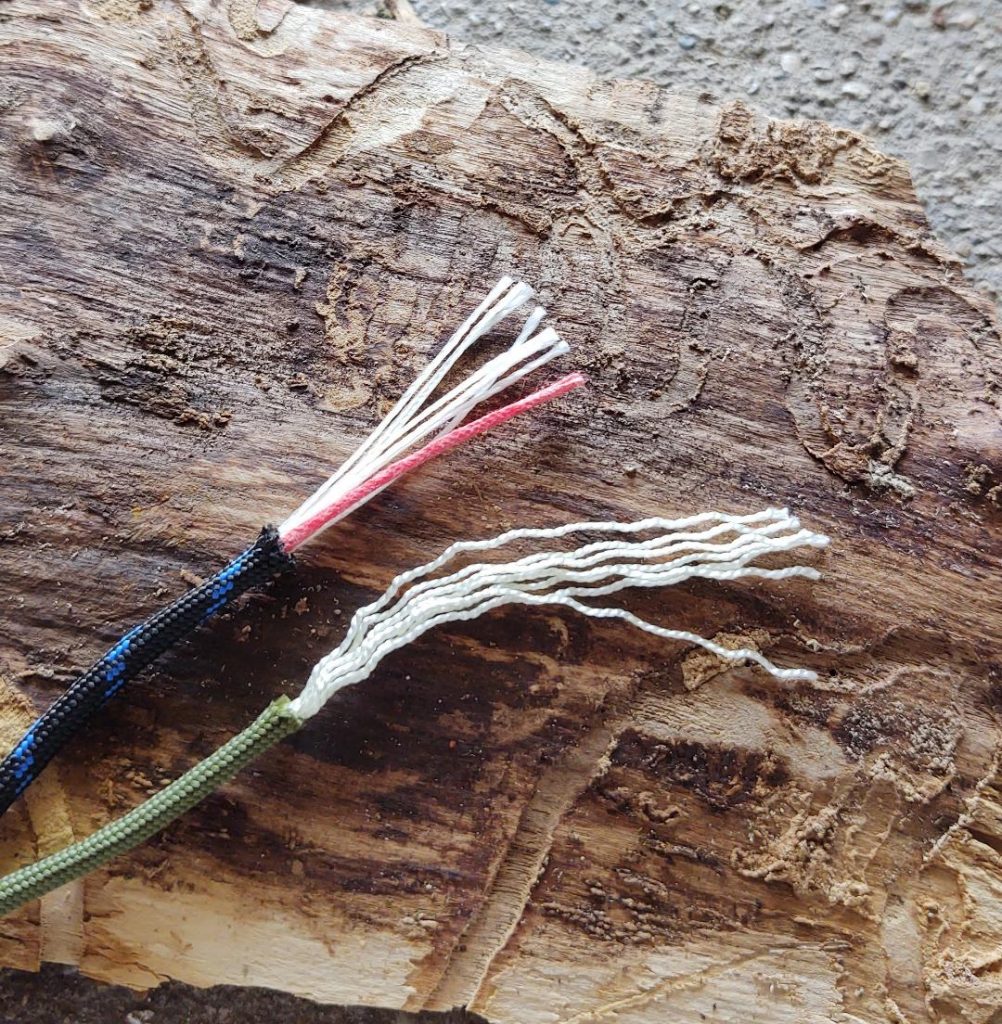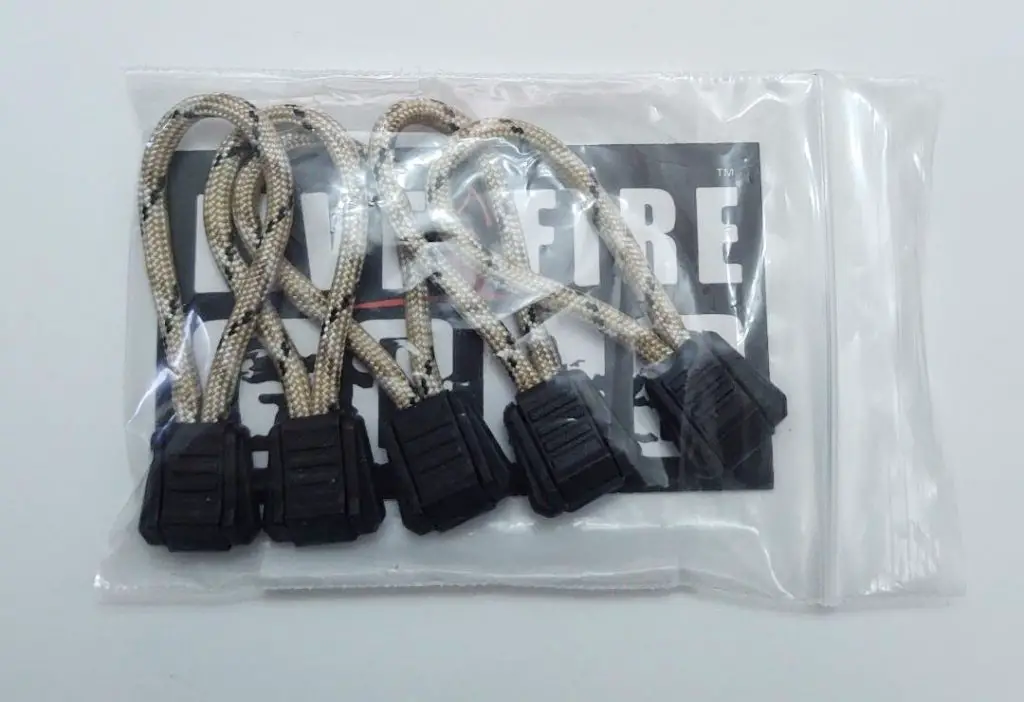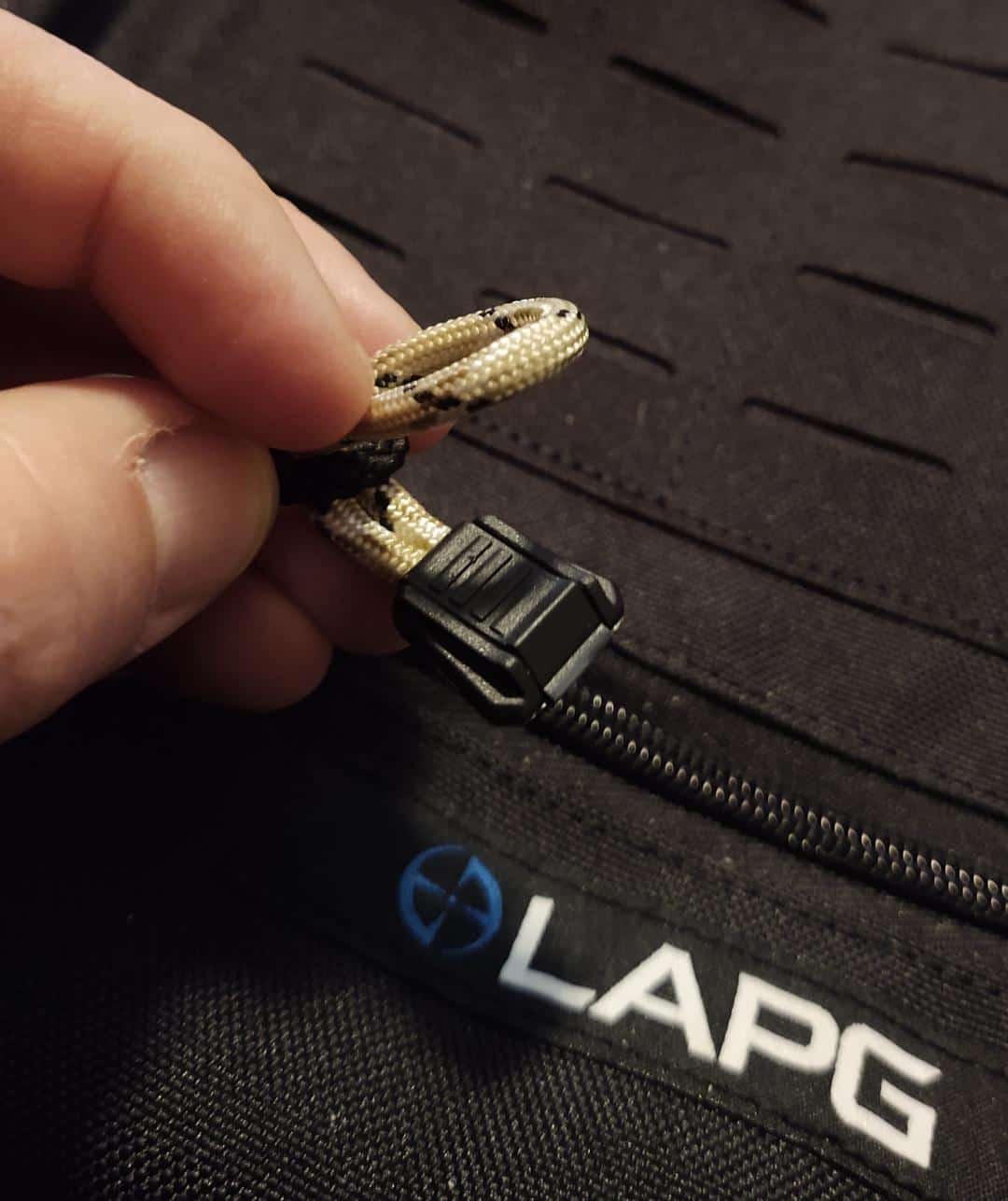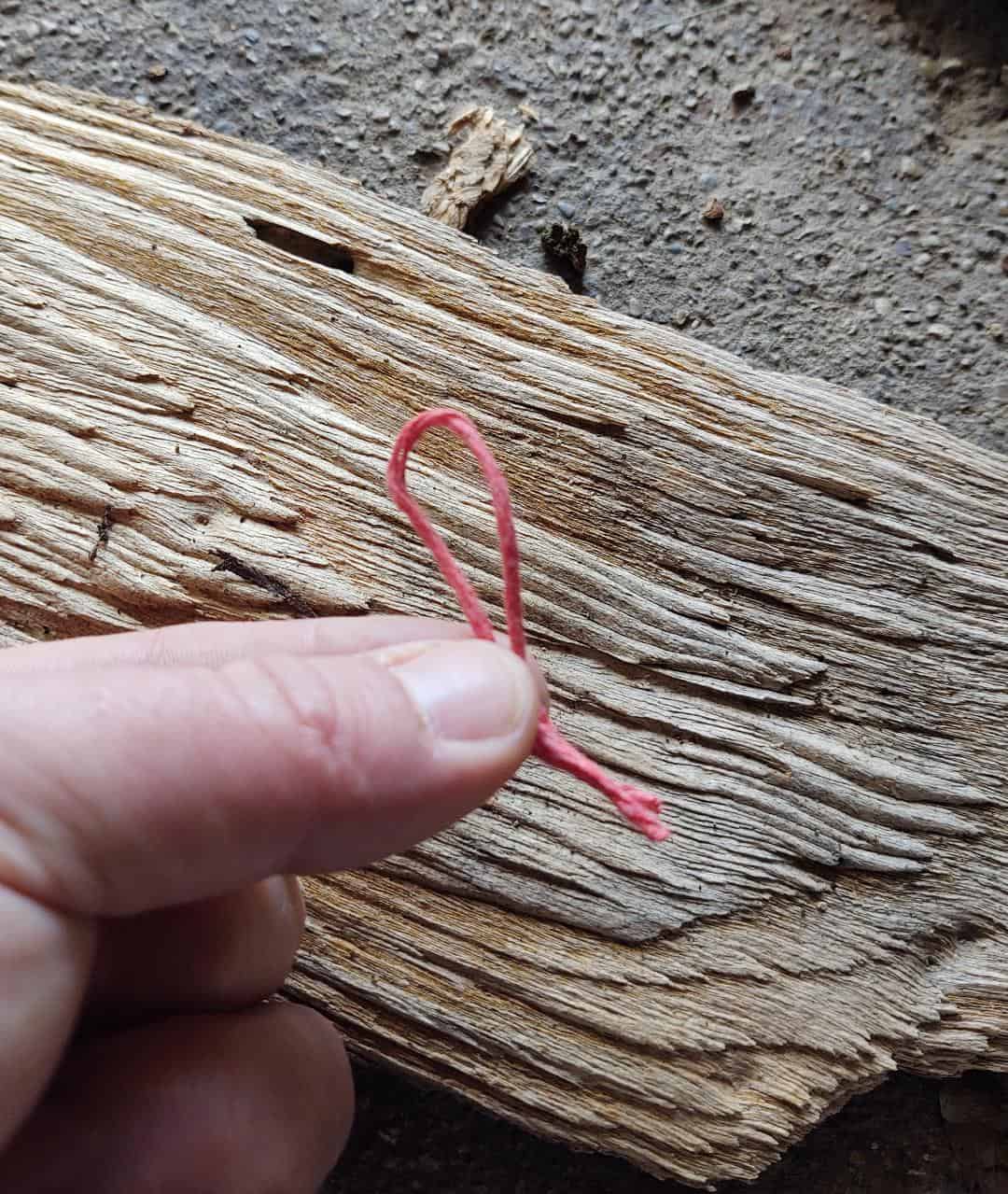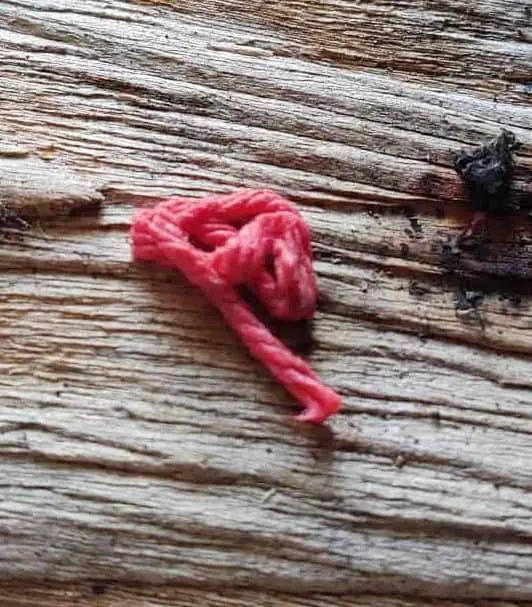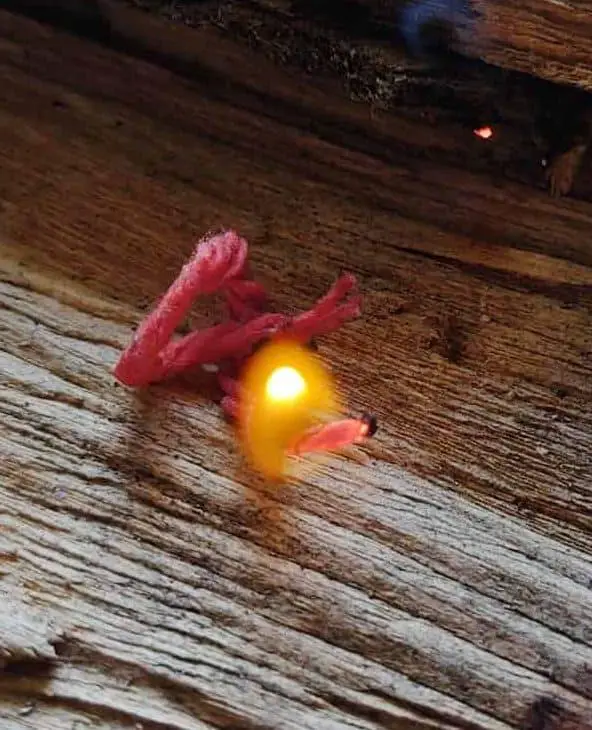I do not think I ever get tired of talking about topics related to fire and testing gear for getting a blaze going. In part, this is because fire has been such an important part of our history as well as one of the top skills any outdoorsman should know how to make.
We all know that the ability to make fire is one of the most important survival skills to know so I will not rehash all its benefits. However, I am pretty excited today because I will be testing out and reviewing an item I have been hearing about for some time now.
Today I will be putting FireCord and 550 FireCord Zipper Pulls by Live Fire Gear, to the test. Here are the features of the FireCord.
SKIP AHEAD
Features
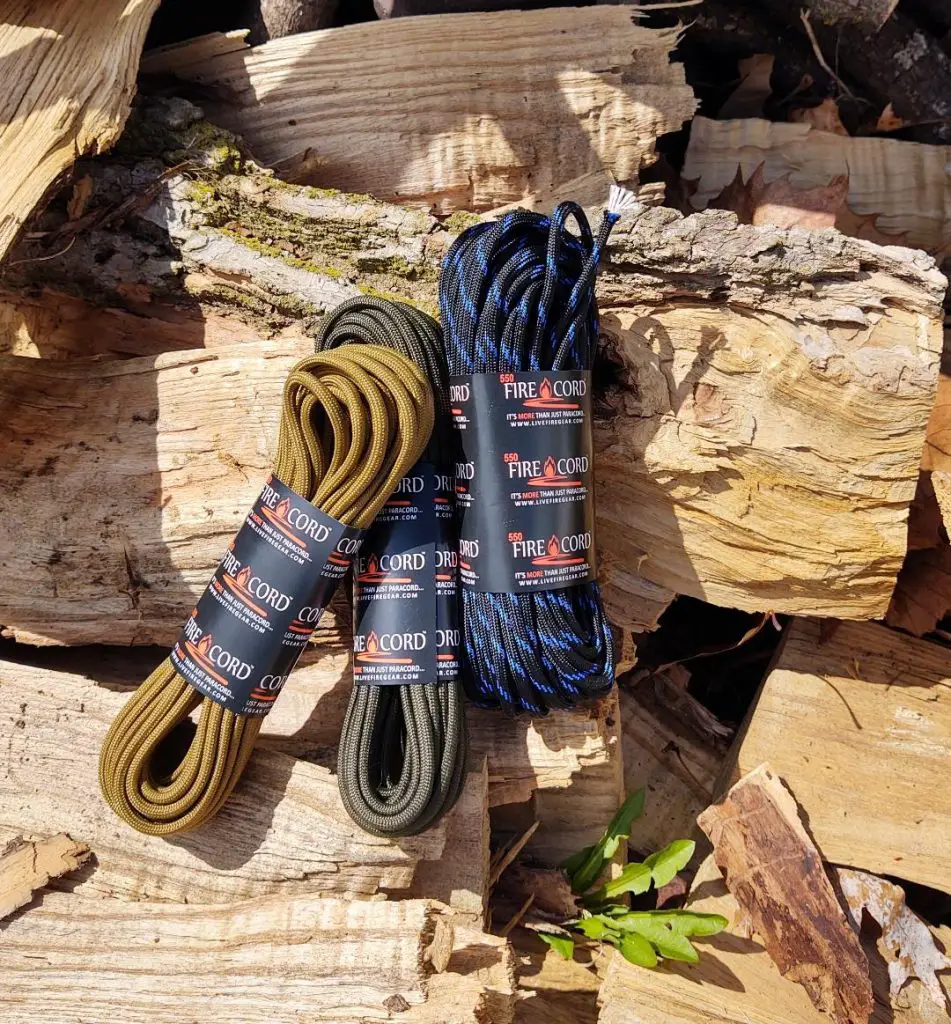
Lengths
You can choose from 25, 50, and 100-foot lengths of paracord.
Color
There are a variety of colors to choose from such as black, multicam, red, and many more.
Tinder
The defining feature of FireCord is its eighth red strand that can be ignited and used as fire tinder.
Country of Origin
FireCord and is made in the USA by Live Fire Gear, which is a veteran owned company.
Hands-On Review
From the outside, this hank of cordage does not look any different from all the other paracord I own. However, after pushing the outer sheath down and exposing the yarns, you will notice something a little different.
In the picture below you will see two different lengths of cordage. On the top is the FireCord and on the bottom is a standard piece of paracord. Can you spot the difference?
That red yarn is hard to miss, and it is also what makes this paracord stand out over other brands. It is designed to take a spark or flame and can be used as tinder to get a fire going. But before getting into my test, I wanted to take a quick look at the zipper pulls.
550 FireCord Zipper Pulls
I also received a package of zipper pulls that are made from the FireCord. Not only are they useful as an additional or replacement zipper pull, but they allow you to easily carry a little bit of fire tinder.
I took a couple of the pulls out and decided to add them to my Atlas 72 Hour Tactical Backpack and placed one on my coat zipper as well.
On my pack, I attached one to an existing zipper pull to make it a bit longer. Adding the FireCord Zipper Pull onto an existing pull is easy.
First, take the FireCord pull and thread about half of the loop through the other zipper pull loop.
Then, fold the FireCord loop over.
Finally, place the plastic end of the FireCord Zipper Pull through the loop and pull it taut.
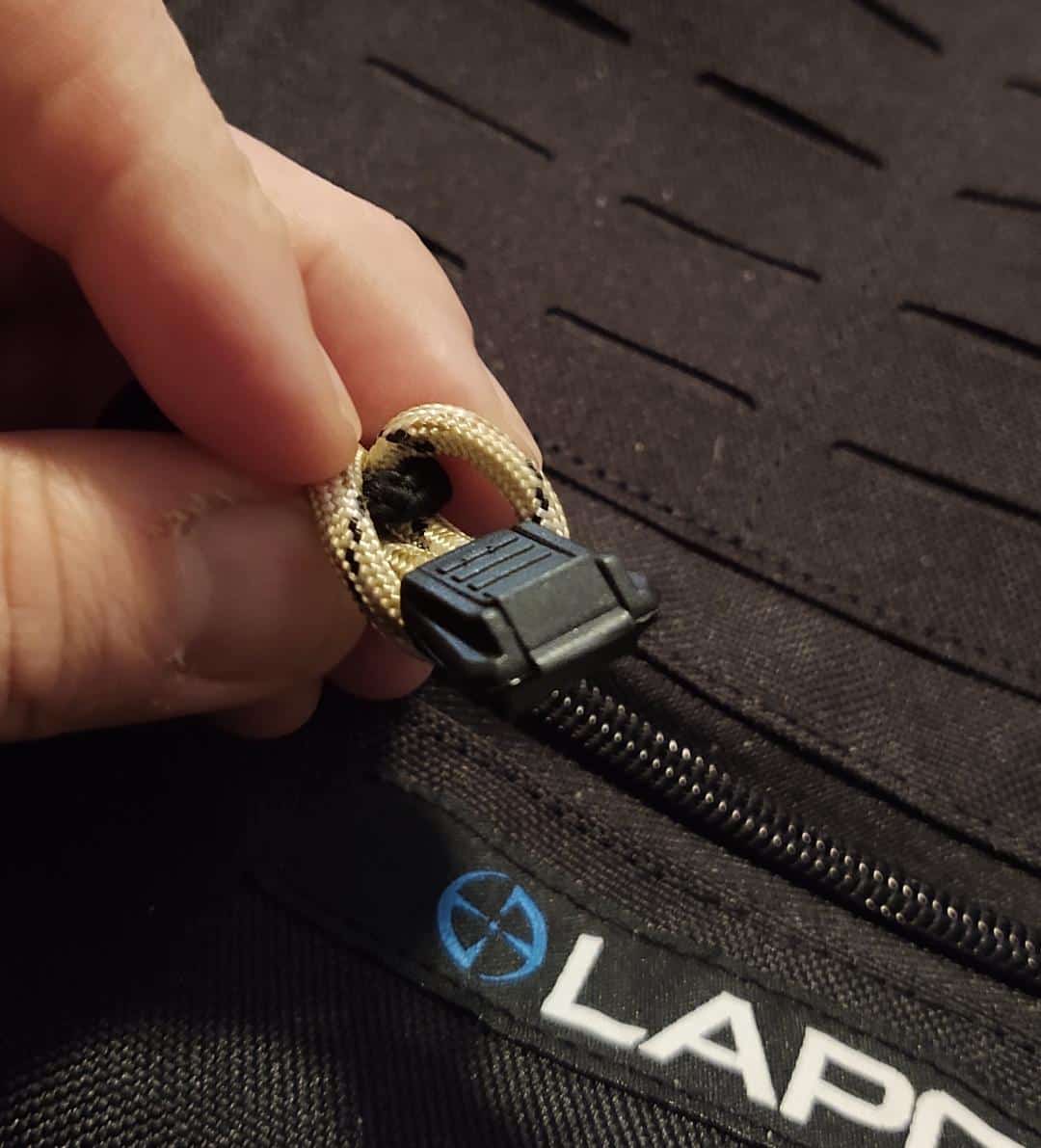
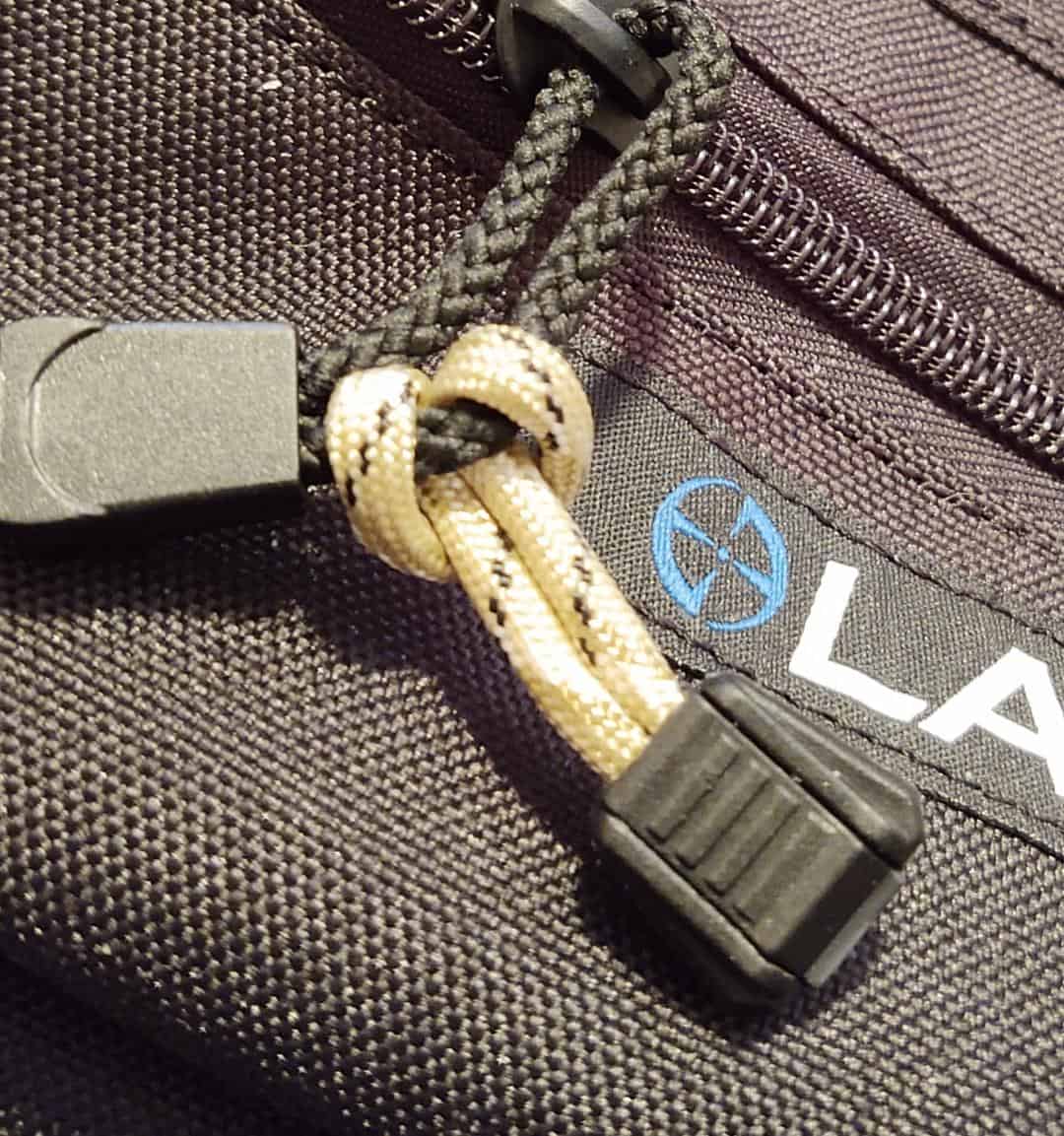
To add the FireCord Zipper Pull to a regular zipper pull, simply repeat the above process.
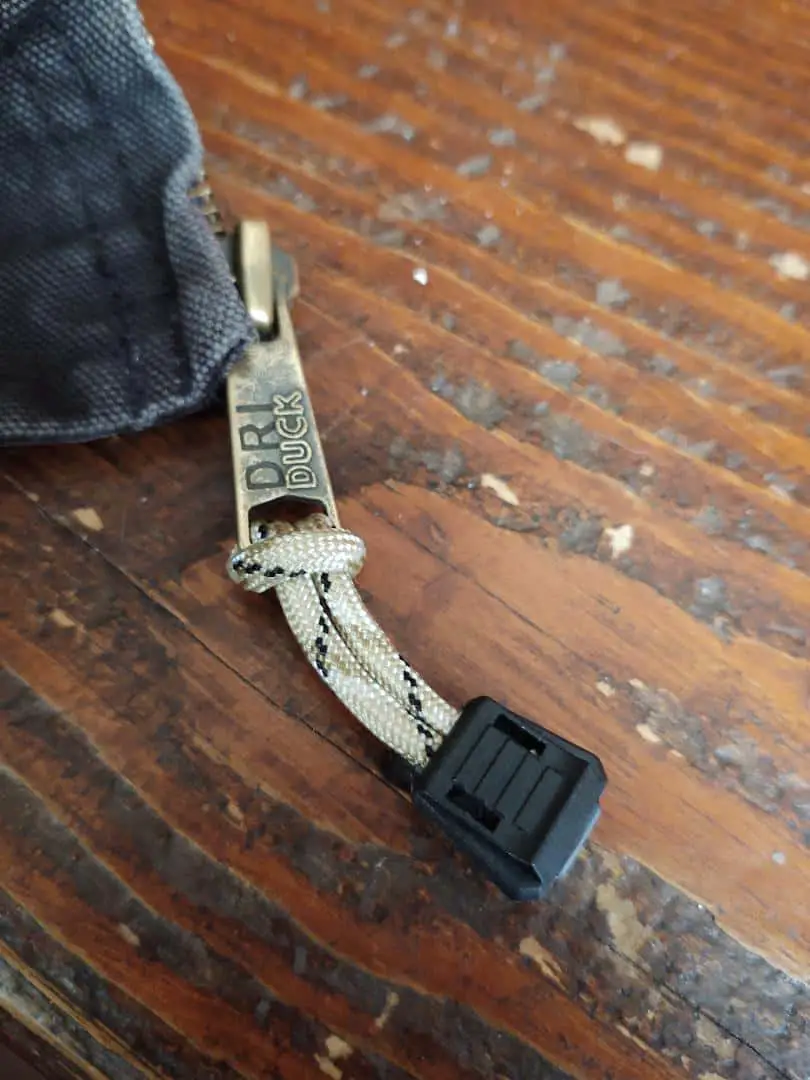
Timed Test
The first thing that I wanted to test was the burn time of the red yarn. I figured it was a good idea to use only the amount of FireCord that comes in the zipper pull, seeing that might be the only amount of cord a person may have.
If you take a close look at the plastic end of the zipper pull you will notice that it is not solid. You can use your fingernails or the tip of a tool to unsnap this clasp.
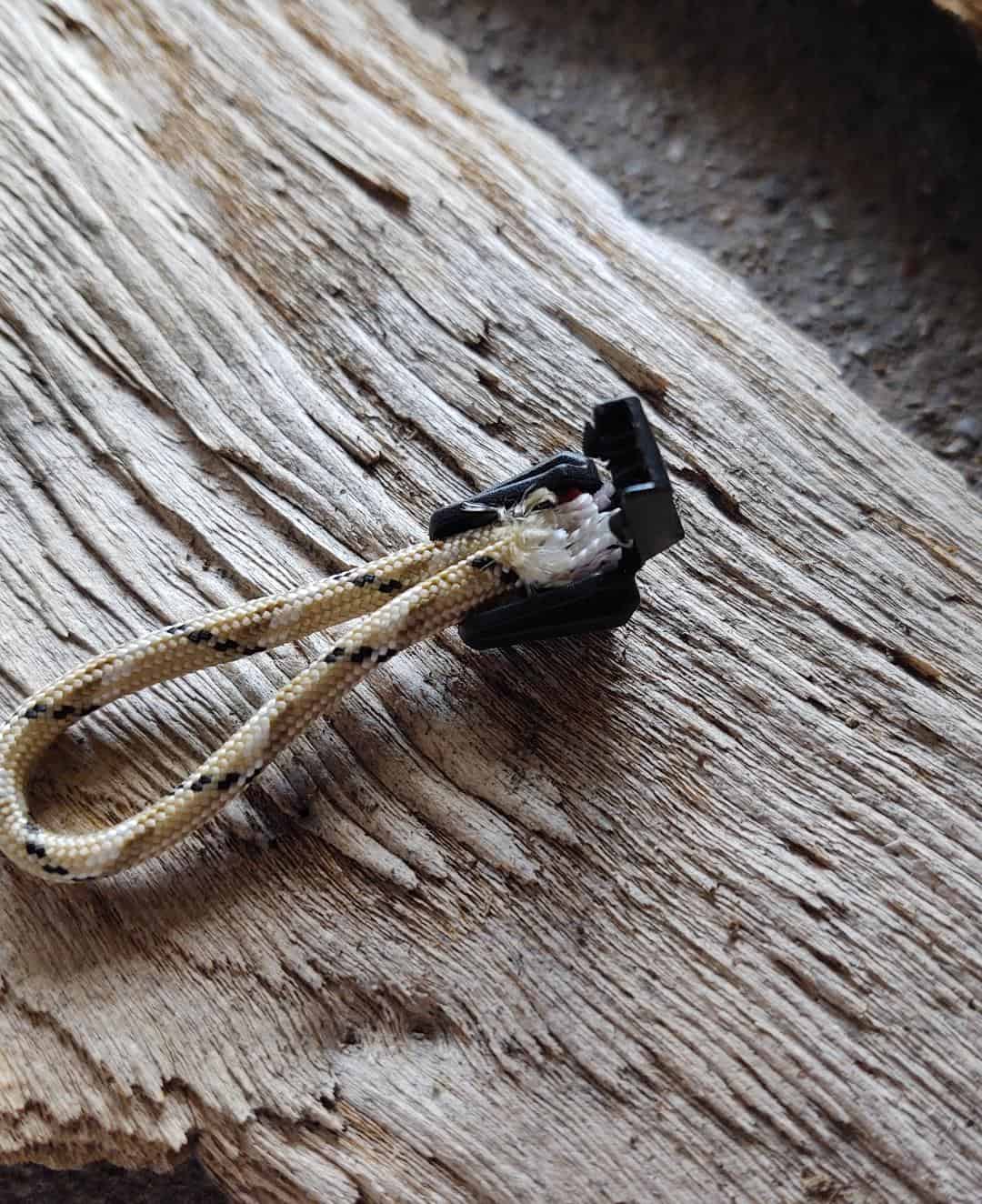
After removing the whole piece of paracord, I pulled the red yarn out and took a quick measurement. It is roughly 4 ¾” long.
Without scraping and fluffing the cord up, I rolled it into a small ball and showered some sparks onto it from my ferrocerium rod. It only took a few quick tries before a flame took hold.
I started my stopwatch and watched as the little pink pile burned down. Once the last flame went out, I stopped the timer and was surprised that the cord burned for one minute seven seconds.
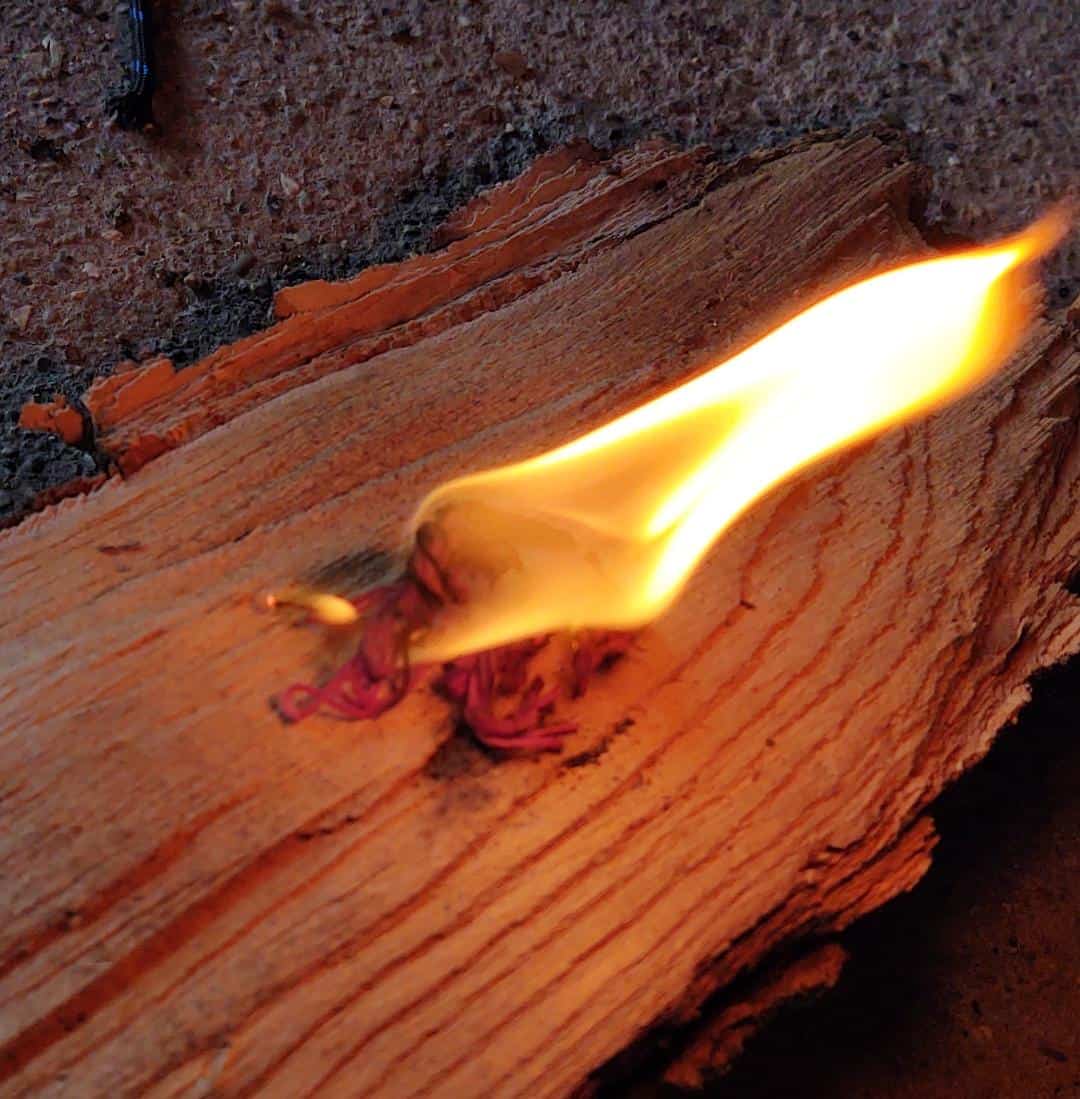
Other than creating a tinder bundle, the red cord can also be used much like a match. I decided to test this out in two different ways. The first way was another timed test with a cut length and the second way was by keeping the red cord attached to the main paracord section.
I cut a length that was approximately five inches long, kept it intact, and used a butane lighter to ignite the end. I did have to play with the “match” a bit (moving it up and down) to keep it going but from tip to tip it burned for one minute and twenty-nine seconds.
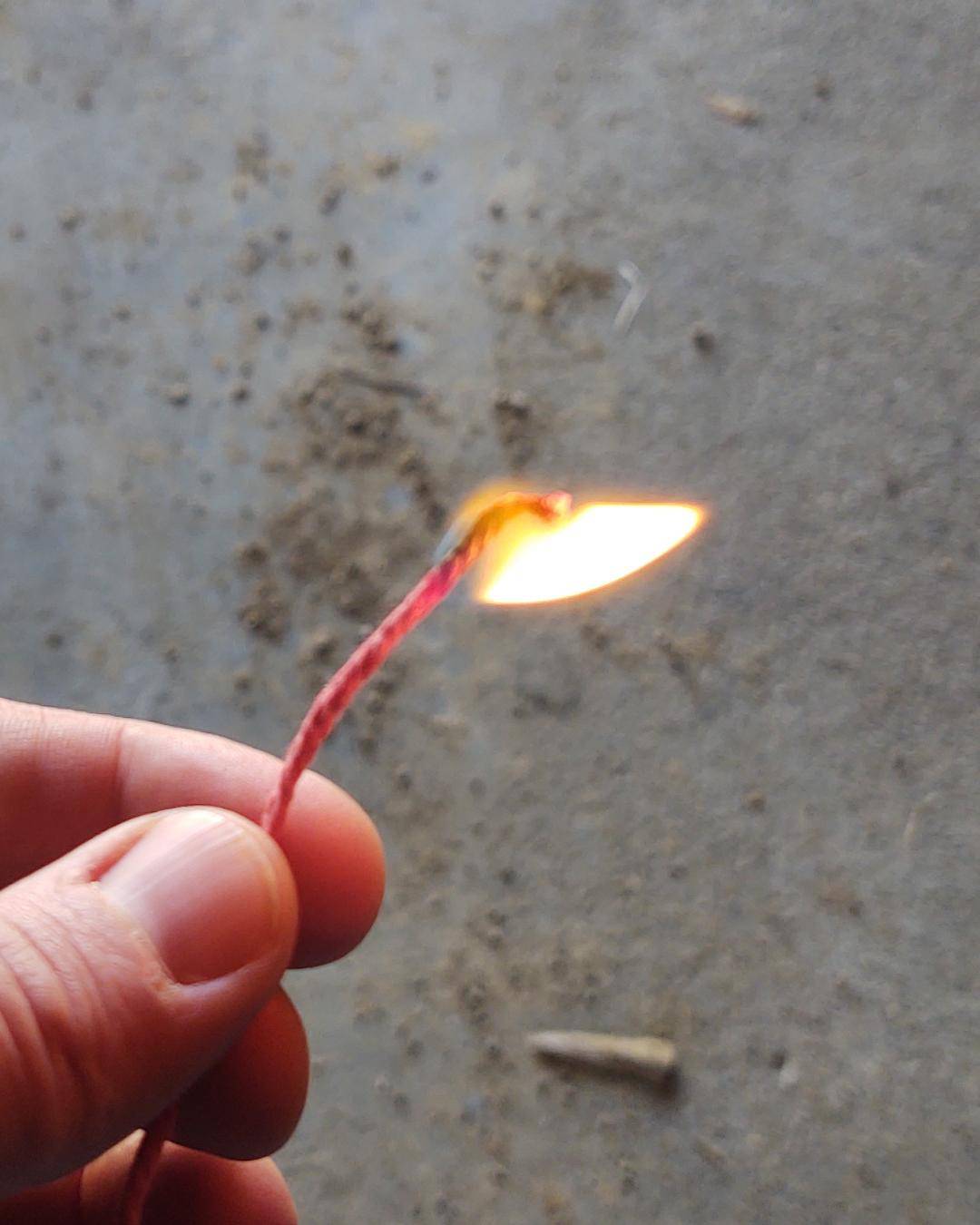
Here is a piece of the red cord on fire while it is still attached to the rest of the paracord.

Water Test
One of the most important aspects of any fire-starting aid and tool is how resistant it is to the elements, especially water. This is why I was so glad to read in FireCord’s specifications that the cord is waterproof.
I cut a length of red cord and dropped it into a cup of water where I let it soak for one full minute. After which, I pulled the cord out and noticed it had soaked the water up like a sponge.
It was easy to ignite the dry cord with a ferrocerium rod but this time around, it was a no-go. No matter how many sparks I showered onto it, the wet cord would not light.
I then used a butane lighter and held the flame to one end of the cord for almost thirty seconds until it finally started to dry out and a small flame took hold.
The flame did not get much bigger as the rest of the cord was still quite wet. The flame was small enough that laying any flammable material on it would have snuffed it out.
I ran two more water tests that included dipping a red cord quickly into a cup of water and dipping an entire piece of paracord into the water. Both had the same results, the red cord soaked up the water and it did not want to ignite.
By dipping an entire piece of paracord into the water it shows that the sheath does not prevent the inner red cord from getting wet.
After a bit of deliberation and looking up a few other reviews, I decided to try one last thing.
I took another piece of wet cord and used the spine of my knife to squeeze out as much water as possible. I then flipped the knife around and used the edge to scrape the cord and expose more surface area.
After many attempts to light the cord, a very small flame finally did take hold, but the flame was extremely reluctant in spreading to the rest of the cord due to dampness.
Wind Test
Water is not the only element that we must contend with when attempting to get a fire going, wind is another concern.
I set up a small pile of dry cord on a piece of wood and fluffed it up with the edge of my knife. It was not particularly windy out but there was a breeze. The cord ignited easily enough using my ferrocerium rod but the flame was quickly blown out.
I figured this was going to be the result because at the end of my other tests, I was able to blow the flame out like you would blow out a match.
The Ideal Use Case
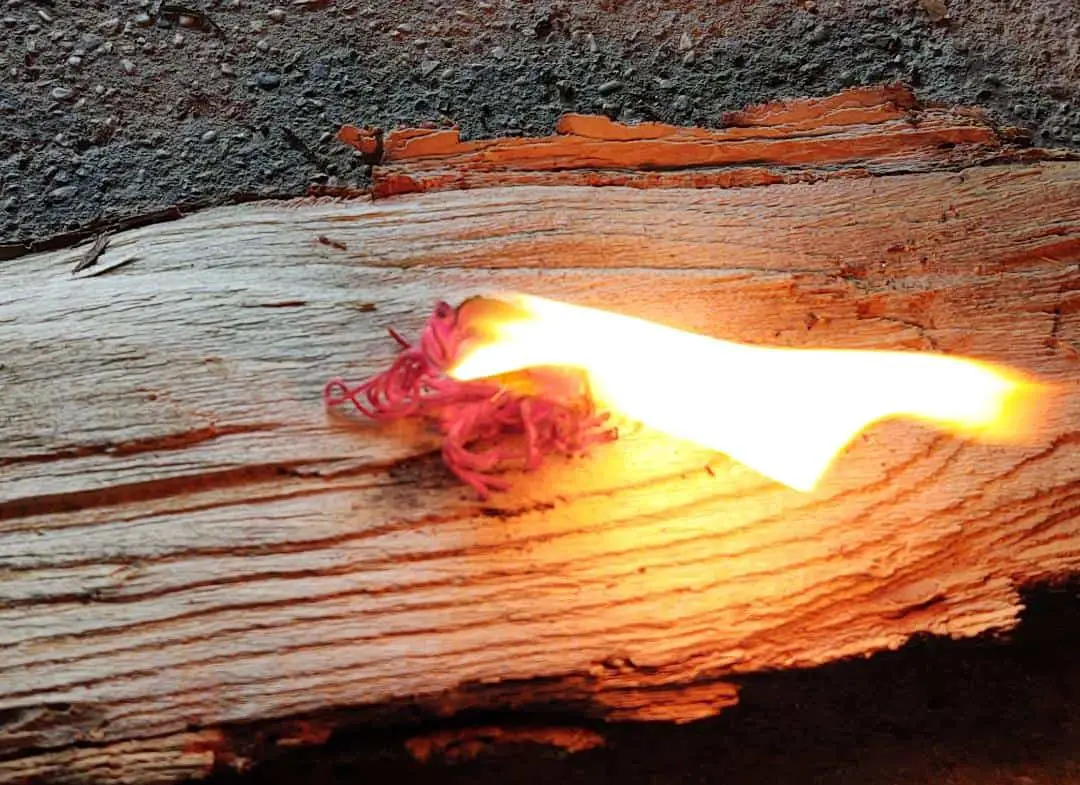
After using this cord in several different ways, I think the best way to use it is as follows.
- Make sure that the red cord is dry and has not become previously wet
- Cut a length that that is at least four to five inches long and untwist the cord into its separate strands
- Use a knife or another edged tool to scrap the cord and expose more surface area
- Ignite the red cord by any means available
Video Review
Here is my video review of the product.
At a Glance
Below is a quick review of my test results.
| Test | Result |
| Zipper Pull Burn Time (4 ¾”) | 1 min 7 sec |
| 6” Length Match | 1 min 29 sec |
| Waterproof | No |
| Windproof | No |
| Ignites With a Ferro Rod | Yes |
FireCord Pros and Cons
Pros
- Affordable
- Two useful tools combined, paracord and an ignitable yarn
- Lightweight, compact, and easy to carry
- Just as versatile as regular paracord
- The FireCord ignites easily when dry
- Can be ignited with a ferrocerium rod
Cons
- Not waterproof
- Not windproof
FAQs
How do I get the red cord out without messing up my paracord?
A: Simply pull out a length of red cord that you want and cut it with a knife. This process may pull out several yarns and scrunch up the nylon sheath. Hold onto the paracord and pull the sheath towards the cut end. This will straighten the sheath out and pull most of the yarns back inside.
How do you seal the cut end of paracord?
A: Sealing an open end on this cord is no different than sealing one on regular paracord. Use a flame to ignite the cut end and allow it to briefly melt. Blow the flame out, allow the hot goo to cool for a few seconds and roll the end shut.
Verdict
I love paracord and everything that it can be used for. I think Live Fire Gear had a great idea with FireCord by inserting an additional, ignitable cord among the yarns. This gives the paracord even more versatility.
However, my issue with the FireCord comes down to the water test. For something to be waterproof it needs to be impervious to water or minimally affected by it (which is water resistance) and I do not think that is the case here.
When the cord comes into contact with water, it soaks it up like a sponge, therefore it is not impervious to water. Trying to ignite a wet cord is next to impossible and the water must be squeezed out before trying to light it, which comes back to my original point.
If the cord is damp, it can be lit but it takes more resources to do so and it does not burn nearly as well as when it is dry. So, through my testing, I would have to say that it is not waterproof.
I also find it difficult to say that the cord is water-resistant because once it is wet, it does not burn the way that it does when it is dry.
This does not mean that I do not like FireCord because I do think it has potential and I would have no problem throwing a hank of it in my pack because cordage is always useful. But I would highly recommend sealing this cord in a dry bag and not relying on it as your only source of starting a fire in an emergency.
Thanks for reading and if you have any thoughts or experiences with FireCord please sound off in the comment section below.


